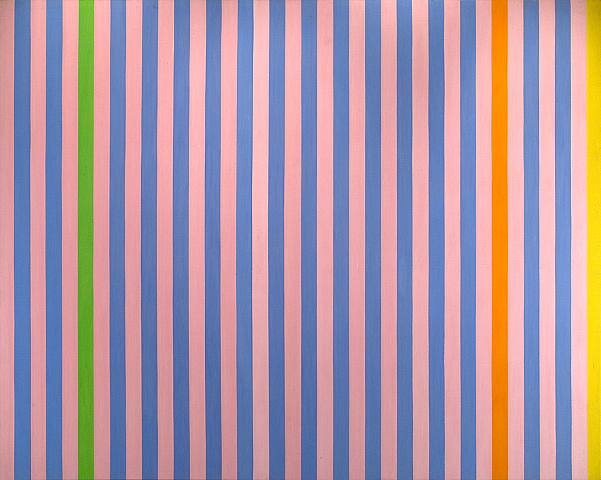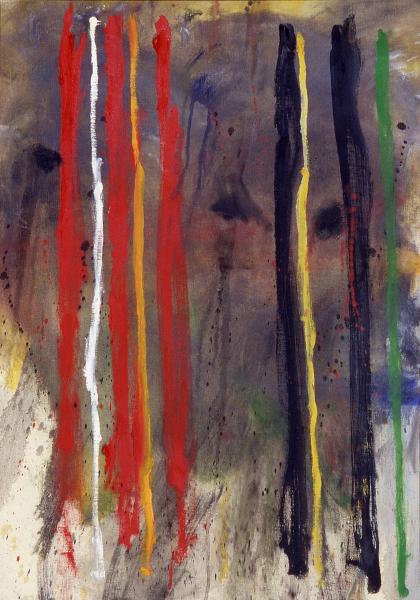Gene Davis • American (1920-1985)
Untitled Serigraph • Serigraph on Paper 78" x 41.5"
Once upon a time, Gene Davis was a White House Correspondent and professional journalist. He interviewed Franklin Delano Roosevelt, played poker with Harry Truman, and he lost at least one job when caught in a compromising position with a woman. Fortunately he had other career options.
Inspired by a 1949 article on Van Gogh, he promptly marched out of his Washington home and visited Muth’s Paint Store, where he bought a set of oil paints. Lack of training hadn’t stopped him from becoming a successful journalist, and he didn’t see it as a roadblock to an art career, either.
Although his only formal art training was high school art classes, he was long fascinated by modern art, especially the work of Paul Klee, the European modernist noted for his use of boldly colored geometric shapes. While working as a Washington-based journalist, Davis regularly visited the Klee Room at the Philips Museum. Only three years after taking up art seriously, Davis already had the first solo show of his work at the Dupont Theatre, one of the few Washington galleries showing local artists during the McCarthy era that fused the words “avant-garde art” with “communist”.
(story continues below break)
INTERESTING STORIES FROM OUR SPONSORS

Following the popular trend, he started as an Abstract Expressionist, but couldn’t follow the crowd for long. Rebeling against the free-wheeling drip-paintings and random abstraction expressions, he developed a more formal abstract style built around color and hard-edged stripes. “I don’t consider myself a non-objective artist. I have very, very strong subject matter in my work, which is stripes. A stripe is just as real as a ##$%?!! flower.”
And so Davis went about creating what are basically color studies using stripes. Fat stripes. Skinny stripes. Straight stripes. Stripes of every color. His work became so popular, Philadelphia had him paint a 3 block long street in front of the Museum of Art in multi-colored stripes. The Corcoran Museum in Washington had his stripes painted on two facing entry walls. The work of this untrained artist began appearing in leading museums around the world, including Canton, Ohio. Shortly after Gene Davis died at age 65, his native city of Washington D.C., the capitol of the most powerful nation on earth, had 8th St. painted in multi-colored stripes to honor his memory.
Not half bad for a fellow who never liked to live his life between the lines.
Canton Museum of Art Permanent Collection • Purchased by the Canton Museum of Art, 74.14
4 Ways to Sound Smart When Viewing at The Canton Museum of Art
1.
“When he painted stripes on the street leading up to the Philadelphia Museum of Art in 1972, it was the largest artwork in world history. Size matters.”
2.
“He had a 29 year career as a journalist that started when he lied about his age, phonied up a resume and got hired as a sportswriter. Insert sports writer joke here.”
3.
“His sports writing career hit a bump when he blew off a Washington Redskins game to date a girl and tried to write his story from the radio broadcast. Didn’t work.”
4.
“His only formal art training was some high school art classes, yet he became one of the most respected modern artists. Insert modern artist joke here.”
Davis Timeline. Scroll over images to see timeline.























